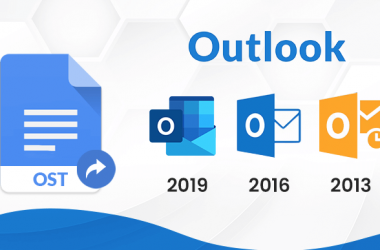For modern parents, raising children to be globally aware and empathetic should be more than a trendy goal. Humanity is become more connected through technology, travel, business, culture and global events. Unfortunately, we’re also seeing sharper divides rooted in misunderstanding, fear, and misinformation. In this complex landscape, helping children understand different faiths and cultures becomes a powerful way to foster respect, empathy, and curiosity. It’s not about promoting one belief over another. It’s about raising thinkers who can navigate the world with an open mind, an appreciation of others’ beliefs and viewpoints and a strong moral compass.
Religion Beyond Belief
Religion isn’t just about belief systems or spiritual practices. It’s deeply woven into the fabric of human history and culture. Faith traditions have shaped the evolution of languages, legal systems, art, architecture, holidays, and even science. From the grand cathedrals of Europe to the intricate patterns of Islamic art, from ancient Hindu epics to Buddhist teachings that influenced Eastern philosophy, religion has left its mark across civilizations and continues to do so.
When children learn about these connections, they start to see how ideas, stories, and values travel and transform over time. Understanding that religion has influenced war, peace, art, social movements, and scientific breakthroughs helps them place historical events and current affairs in a proper context. They begin to make sense of why certain holidays are celebrated, why specific laws exist, or why some political issues are so emotionally charged.
Common Values, Different Practices
While rituals and doctrines differ across religions, many share a common foundation. Values like compassion, generosity, forgiveness and a sense of belonging run through religions across the world. Teaching kids about religious holidays and practices is an opportunity to explore these shared human themes and prepare them to
Take Christmas, for example — often associated with gift-giving among Christians, but rooted in broader messages of hope and goodwill. During Diwali, Hindus celebrate the triumph of light over darkness, a metaphor that resonates beyond religion. At Eid ul-Adha, Muslims give Qurbani, an act of giving that honors sacrifice and empathy for the less fortunate. These stories and practices, when explored together, show children that kindness and moral reflection are universal. They also learn that religion, when practiced in its truest form, is often more about how we treat others than rigid rules or dogma.
Breaking Down Stereotypes Early
One of the strongest arguments for teaching children about different faiths and cultures is its potential to counter prejudice before it takes root. Kids are naturally curious and open-minded. When they’re exposed early to a variety of outlooks and belief systems, they’re less likely to see unfamiliar practices as strange or threatening. Instead, they learn how to ask respectful questions, compare perspectives, and appreciate difference.
This isn’t about teaching religion in a devotional way. It’s about providing inclusive, age-appropriate education that helps children become critical thinkers and respectful listeners. In a time when misinformation can spread fast, especially online, a solid understanding of world religions offers a grounding perspective that helps kids separate fact from fear.
Making It Practical and Engaging
Introducing religious literacy doesn’t require a separate class or complex curriculum. It can be woven into existing subjects through stories, cultural celebrations, art projects, or visits to local community centers and places of worship. Reading folktales from different traditions, learning how holidays are celebrated around the world, or even exploring how language and food reflect religious influence are all accessible ways to engage children.
In the classroom, this approach naturally ties into subjects like geography, history, ethics, and literature. At home, parents can support this learning through books, documentaries, or conversations during international holidays. What matters most is creating a space where children feel safe asking questions and making connections.
Building Skills for a Global Future
As kids grow up in multicultural classrooms and move into international careers or engage with global challenges, the ability to understand different perspectives becomes critical. Whether they’re working on climate change, diplomacy, healthcare, or tech innovation, success will depend not just on intelligence, but on emotional and cultural intelligence.
Understanding religious and cultural backgrounds allows children to collaborate more effectively, navigate sensitive issues with empathy, and avoid unintentional offense. In short, it helps them thrive. This kind of awareness isn’t a soft skill anymore. It’s a vital part of being a well-rounded, globally competent adult.
Raising Curious, Compassionate Citizens
Ultimately, the goal of teaching children about world religions isn’t and shouldn’t be to steer them toward belief. It’s to help them build comprehension, curiosity, and compassion. It’s about equipping them with the tools they need to engage with the world respectfully and intelligently.
Parents, teachers and learning platforms have an important role to play here. By introducing children to diverse faiths and cultures early on, we give them a broader lens through which to understand themselves and others. And in doing so, we’re not just teaching them about religion. We’re teaching them how to be better humans.
Parents, educators and learning platforms have an important role to play here. By introducing children to diverse faiths and cultures early on, we give them a broader lens through which to understand themselves and others. And in doing so, we’re not just teaching them about religion. We’re teaching them how to better humans.








